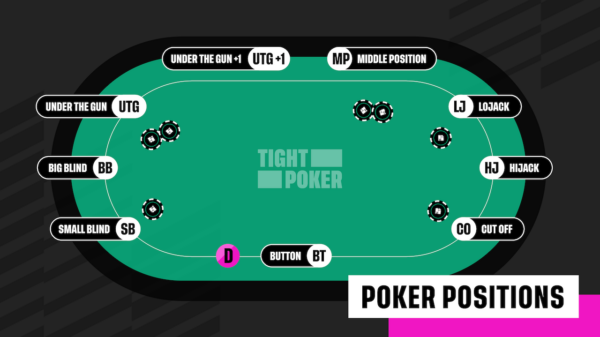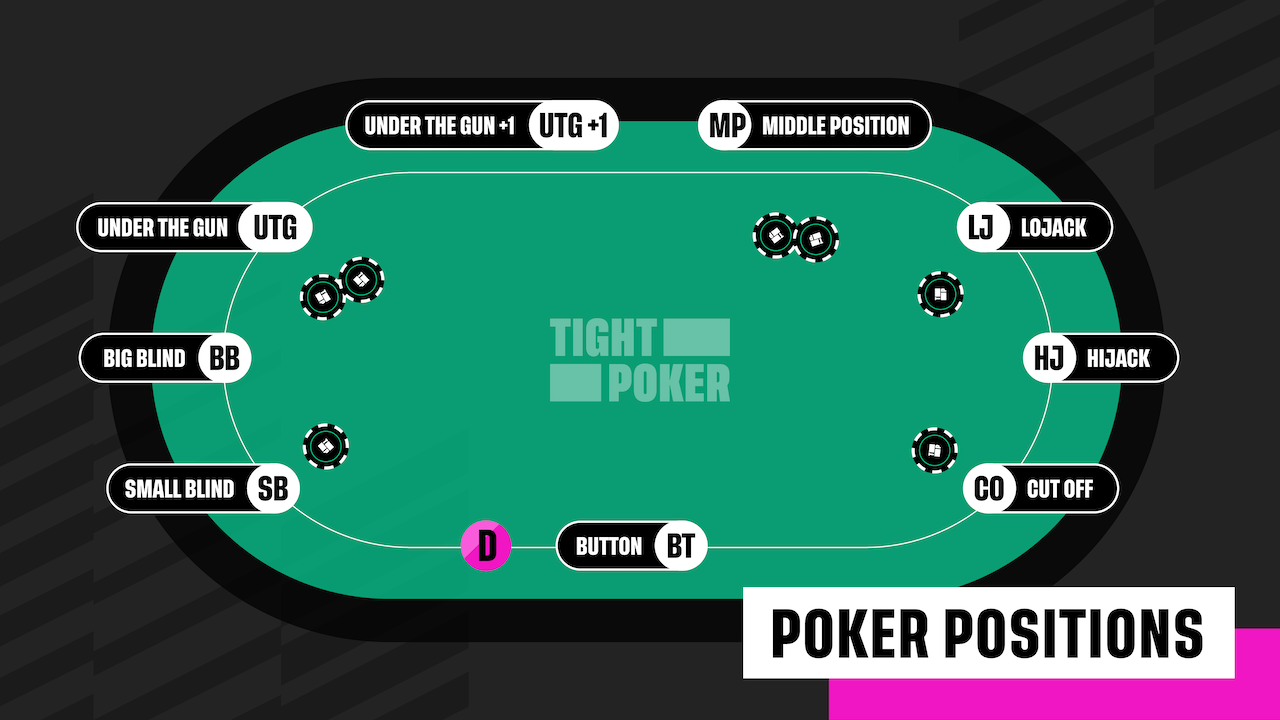Determining the Dealer’s position in a Poker game is a crucial aspect of the game, as it affects the order of betting and the distribution of cards. In poker, the dealer position rotates clockwise after each hand to ensure fairness and equal opportunities for all players. The Dealer acts last and has one more opportunity to see his whole cards before he has to act. The dealer position is predetermined before the game starts. It does not change during the game, even if a new dealer replaces an existing one. This article will explain the methods used to determine the Dealer’s position in various poker variants.
What is Poker?
Poker is a family of card games in which the players bet into a central pot. At the end of the hand, the player with the strongest combination of cards wins. Poker is a game of skill. Some poker games have elements of chance, such as community cards and flushes in Texas Hold’em, but these do not alter whether a player has made his best possible hand or not. In order to win at poker, players must play strategically and make optimal decisions throughout the game. While luck does play an important role in winning hands and tournaments, there are many things that you can do to improve your chances of winning.
The Importance of the Dealer’s Position:
1. Betting Order:
When it is a player’s turn to act, every player and the Dealer can place a bet. In casino games like Texas Hold’em and Omaha, the betting order is fixed. The betting starts with the first seat to the left of the button and then continues clockwise around the table. If there are one or more blind players at a table, they will usually be required to act first before other players have an opportunity to act.
2. Blind Positions:
In some Poker rules games, there are blind positions. The blind players must make their decisions before the other players are allowed to act. In these cases, the blind player will usually be told if they must act first and in what order. The blind player can decide how other players at the table have acted. If a player is required to act before their turn comes up and they want to raise the bet, they will need to adjust their strategy.
3. Dealer’s Position:
An impartial party determines the Dealer’s position in advance of each game before starting it. The Dealer’s seat is usually arranged clockwise around the table, starting from the player to the immediate left of the button.
Determining the Dealer’s Position:
1. Dealer Button:
The Dealer’s button is a small disc that is placed in the center of the table and indicates which player acts as the Dealer. When a new game starts, the button is placed in front of the first player to act. The former dealer position rotates clockwise around the table, with every new hand starting from where it left off. A round disk is commonly used for this purpose and works as long as everyone can see which seat represents which position.
2. Dealer Position at Blind-Staked Tables:
In some poker games like Texas Hold’em and Omaha, blinds are staked by players who are required to bet before other players at their tables have an opportunity to act. These players are usually called “small blind” and “big blind.” The small blind is placed in front of the player to the left of the button, while the big blind is placed in front of the player to the right.
3. Dealing Dealer:
The Dealer is determined at random by a member of staff or by a computer program. Every game has its method for determining who will be seated in that position. Some games are played with a dealer button, while others do not have one at all and simply require those who act as dealers to swap seats after every hand.
Conclusion:
We have discussed a lot in this article. I hope that you have learned the different methods used to determine the Dealer’s position in various poker variants. By now, you should be more knowledgeable about this important topic and would be able to identify most of the dealers’ positions without even looking at their cards. You can now practice the art of spotting them properly in casino games.



















